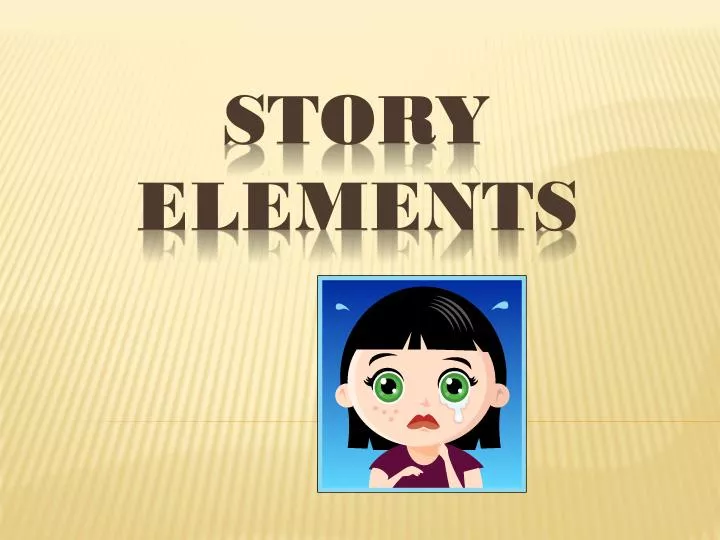
- STORY ELEMENTS HOW TO
- STORY ELEMENTS MOVIE
characters- the individuals in the story.
STORY ELEMENTS HOW TO
Model for students how to analyze relationships and use key details. In this big idea, focus on character, setting, and main events. These elements develop the story in a logical way to enable readers to easily follow the text. Story elements, sometimes called story grammar, are the parts of a story.Learn more about graphic organizers in this TIP Sheet. Story Organizer: Students can fill in a graphic organizer or plot diagram that captures the main events of the story.This could be a linear timeline with pictures and/or text, or integrate pictures and text into something resembling a comic strip then compare events from different parts of the story. Story Map: During or after reading or listening to a text, students can write or draw out the major events of the story.
STORY ELEMENTS MOVIE
Movie Posters: Students can create a movie poster that presents one of the major settings and events from the story then compare settings from different parts of the story. Map: During or after reading a story, students can create a map of the major settings from the story, including some small images of a major event at each site then compare settings from different parts of the story. Explain your thinking about the events as they occur. Think Aloud: To model explaining how events from a text unfold in a story, think aloud as you read a chapter book to the class.  Asking Questions: In a small group, or whole class setting, ask students a series of questions about the events to compare and contrast how the events unfolded in a chapter. This is a way for them to keep track of their thinking as they continue to read. After each day of reading or listening to the text, they should spend the last 5 minutes to do a Quick Write reflection (which may look like writing words, creating images, or dictating reflections) about how the events are unfolding. Reflective Journal: As students read or listen to a text, ask them to write, draw, or talk about the events as they unfold in the text. Learn more about accessing grade-level text in this TIP Sheet.
Asking Questions: In a small group, or whole class setting, ask students a series of questions about the events to compare and contrast how the events unfolded in a chapter. This is a way for them to keep track of their thinking as they continue to read. After each day of reading or listening to the text, they should spend the last 5 minutes to do a Quick Write reflection (which may look like writing words, creating images, or dictating reflections) about how the events are unfolding. Reflective Journal: As students read or listen to a text, ask them to write, draw, or talk about the events as they unfold in the text. Learn more about accessing grade-level text in this TIP Sheet. 
Then, have them identify the problem (i.e., conflict) and solution (i.e., resolution) and describe how Auggie changes over the course of the story. As students read, encourage them to keep track of key events that take place in the beginning, middle, and end of the story.
Anchor Text: Use an anchor text such as Wonder by R.






 0 kommentar(er)
0 kommentar(er)
